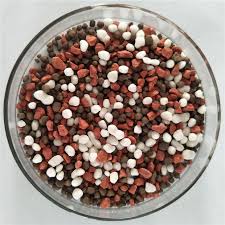
Jul . 24, 2024 01:13 Back to list
Current Pricing Analysis for 1 kg of Potash and Market Trends in Fertilizer Costs
The Pricing and Demand Dynamics of Potash A Focus on the 1 kg Package
Potash, a term commonly used to describe various potassium-containing compounds, has become an indispensable ingredient in modern agriculture. As the demand for high-quality crops continues to escalate, the significance of potash in fertilizers cannot be overstated. Understanding the pricing dynamics of potash, specifically focusing on a 1 kg package, provides insight into both market trends and agricultural strategies.
What is Potash?
Potash primarily refers to potassium chloride, but it can also encompass other potassium compounds such as potassium sulfate and potassium nitrate. Its primary role is as a fertilizer that enhances crop yield, improves water retention, and increases resistance to diseases. Potassium is one of the three essential macronutrients for plants, alongside nitrogen and phosphorus, making potash a cornerstone for sustainable farming practices.
Factors Influencing Potash Prices
The price of potash is influenced by a multitude of factors, including global demand and supply, production costs, and geopolitical considerations. As countries demand more food to support their growing populations, the agriculture sector's reliance on fertilizers—including potash—intensifies.
1. Global Demand The increase in global food production, especially in developing nations, has driven the demand for potash. According to agricultural reports, as populations grow and dietary preferences change, the need for higher yields and better-quality crops has led farmers to prioritize fertilizers that enhance nutrient availability.
2. Supply Chain Dynamics Potash extraction and production are concentrated in certain regions, notably Canada, Russia, and Belarus. Any disruption in these regions due to geopolitical tensions or natural disasters can significantly influence potash prices globally. Limited supply combined with high demand typically drives prices upwards.
3. Production Costs The cost of extracting and processing potash is another critical factor. Fluctuations in energy prices and labor costs can lead to changes in potash pricing. Furthermore, advancements in mining technology may improve efficiency but also require substantial initial investments, impacting overall pricing strategies.
potash 1 kg price

Pricing for 1 kg Packages
While potash is often sold in bulk to commercial agricultural producers, retail options like 1 kg packages cater to smaller-scale farmers and home gardeners. The price for a 1 kg package of potash can vary widely based on location, brand, and packaging. On average, a 1 kg package of potassium chloride can range from $5 to $15, depending on the supplier and market conditions.
These smaller packages are beneficial for urban gardeners and hobbyists who might not need large quantities. However, the pricing strategy can often reflect the premium associated with convenience and accessibility. Retail pricing for smaller quantities may not always align with bulk pricing, highlighting a common trend where smaller packages often incur higher costs per kilogram due to packaging and distribution expenses.
Market Trends and Future Outlook
Looking ahead, the potash market is expected to experience volatility. With climate change impacting agricultural practices, there is a growing emphasis on sustainable fertilizers. This shift could lead to innovations in potash use, including more efficient application methods and the development of enhanced efficiency fertilizers (EEFs).
Additionally, as countries focus on self-sufficiency and sustainable practices, the local sourcing of fertilizers may gain traction, impacting international trade dynamics. Future potash pricing will likely reflect these trends, as well as the ongoing shifts in global supply chains and consumer preferences.
Conclusion
Understanding the pricing of potash, especially in smaller 1 kg packages, is crucial for farmers and gardeners alike. As the world strives for sustainable agriculture, potash remains a vital ingredient in ensuring food security. Keeping an eye on market trends and geopolitical factors will be essential in navigating the future landscape of potash pricing and its implications for agricultural productivity.
-
10 10 10 Fertilizer Organic—Balanced NPK for All Plants
NewsJul.30,2025
-
Premium 10 10 10 Fertilizer Organic for Balanced Plant Growth
NewsJul.29,2025
-
Premium 10 10 10 Fertilizer Organic for Balanced Plant Growth
NewsJul.29,2025
-
Premium 10 10 10 Fertilizer Organic for Balanced Plant Growth
NewsJul.29,2025
-
50 Pound Bags of 13-13-13 Fertilizer for All Plants – Bulk & Organic Options
NewsJul.28,2025
-
High-Efficiency 15-30-15 Granular Fertilizer for Healthy Crops
NewsJul.28,2025
